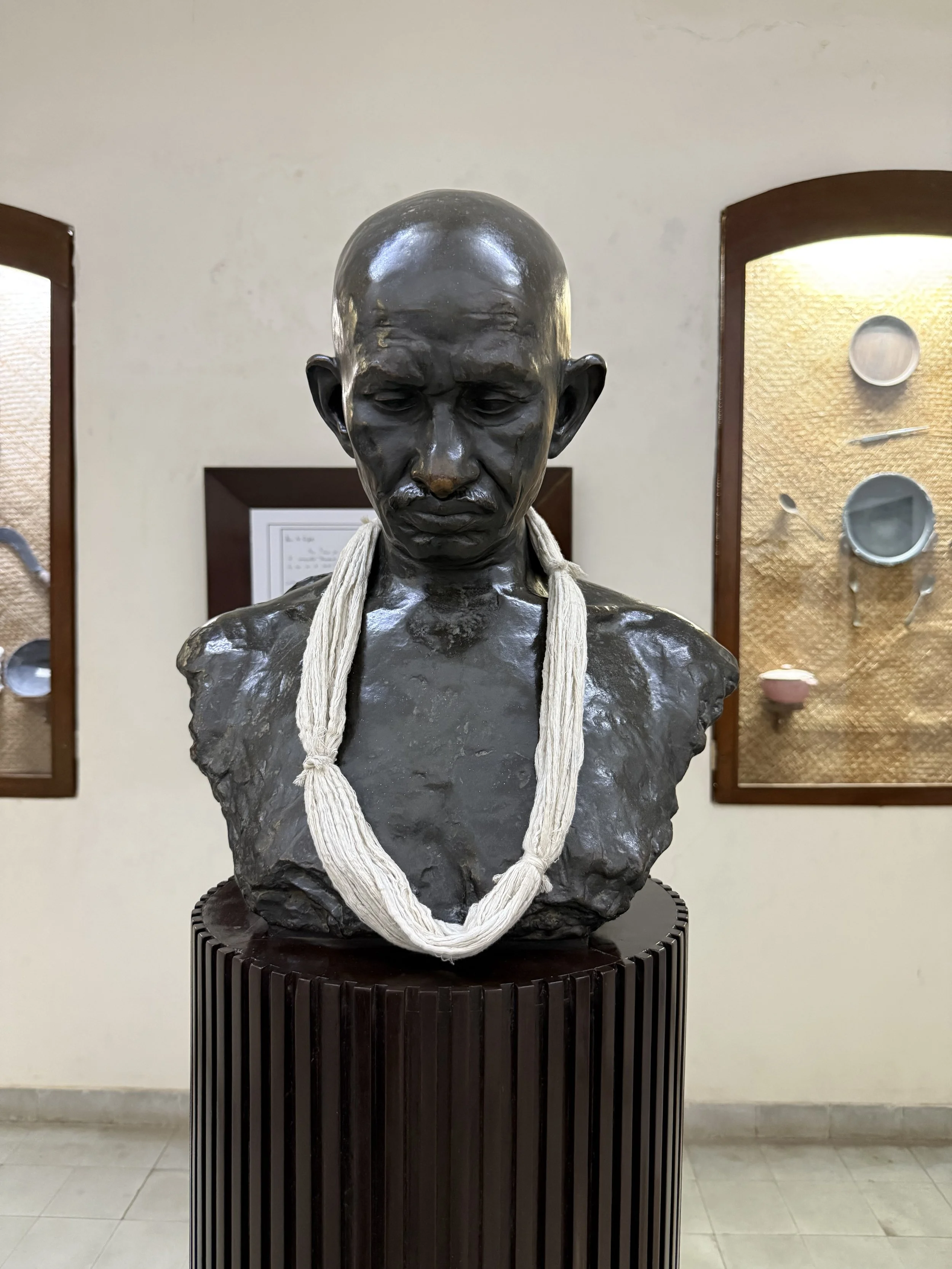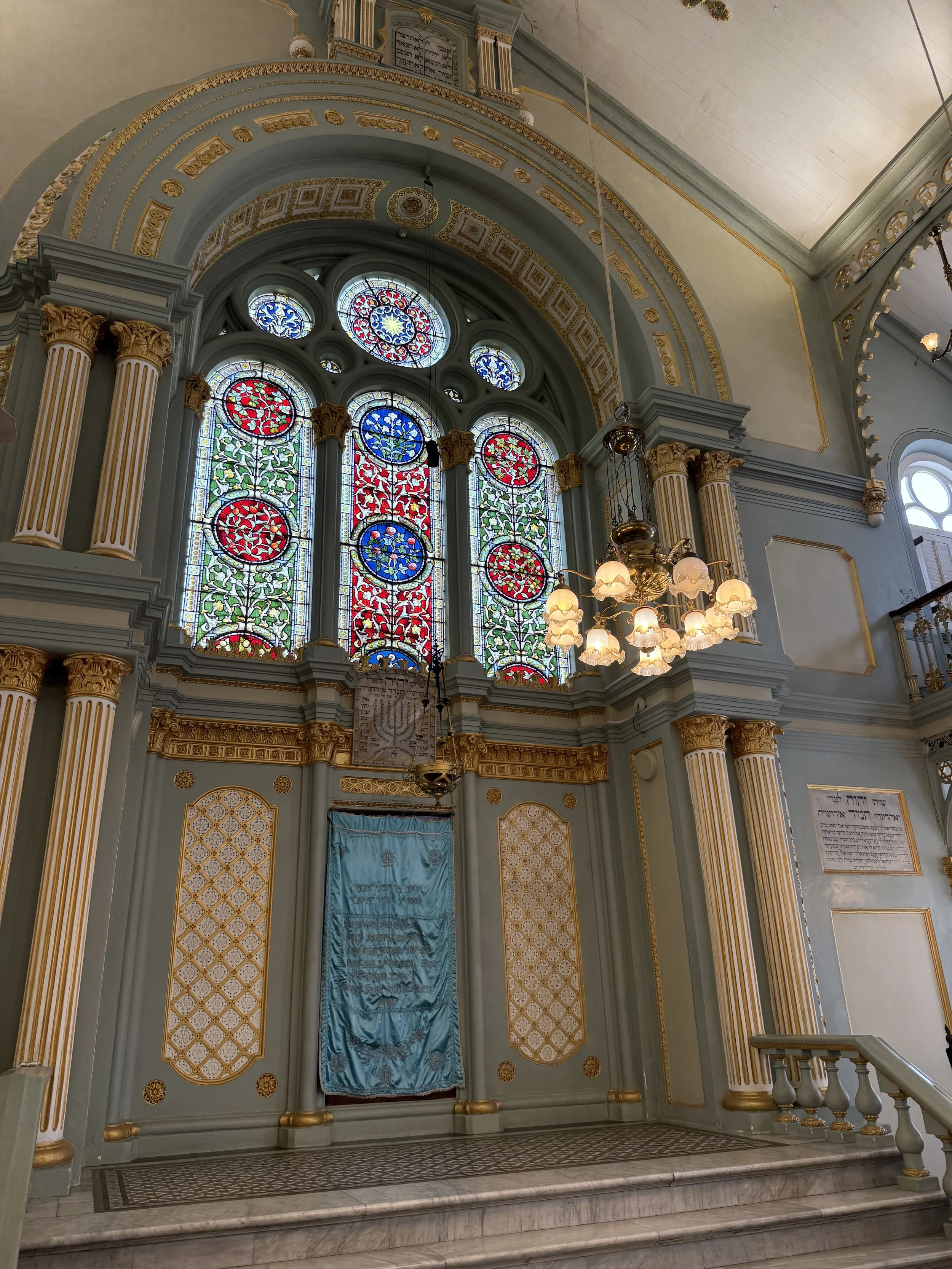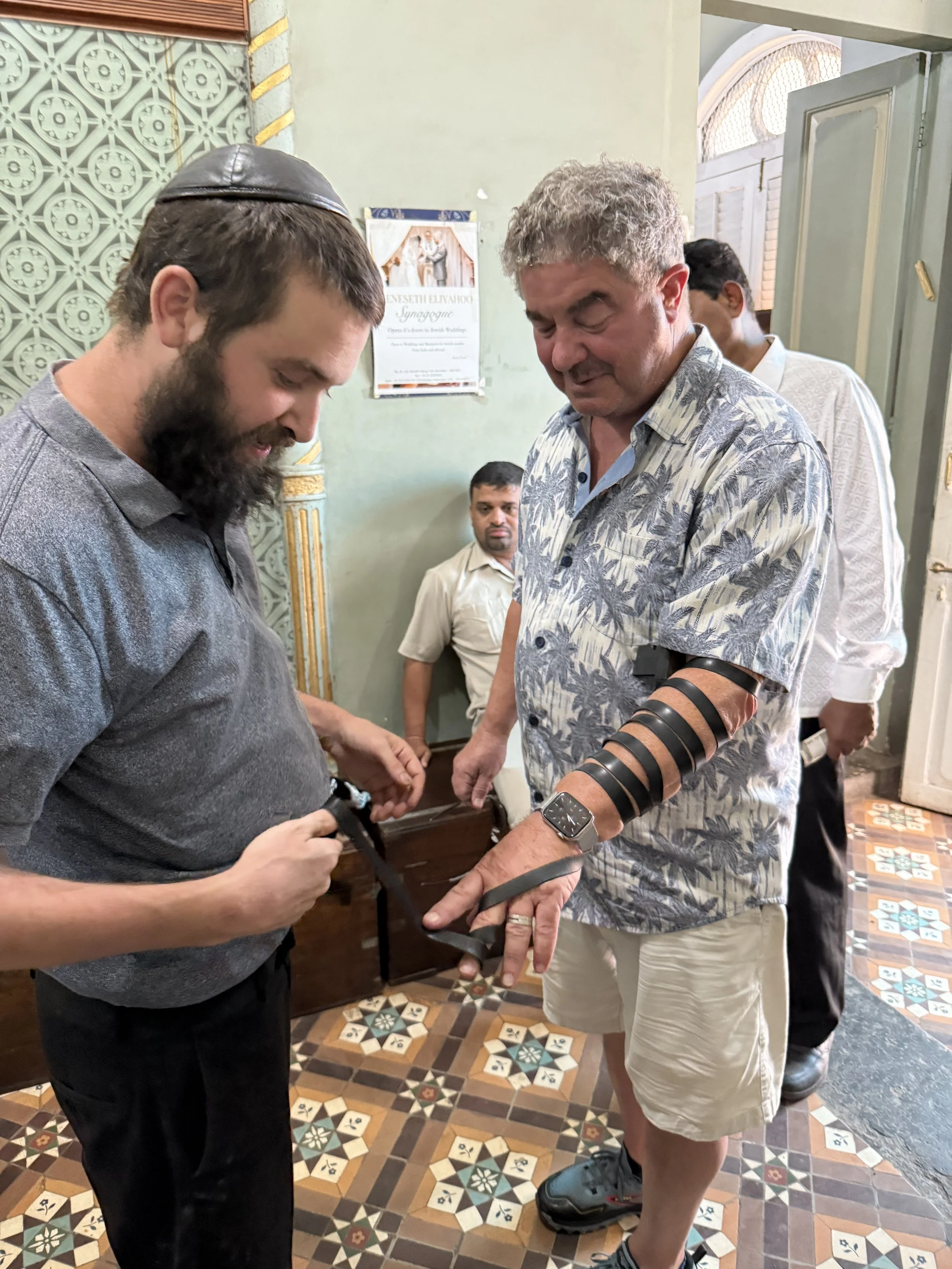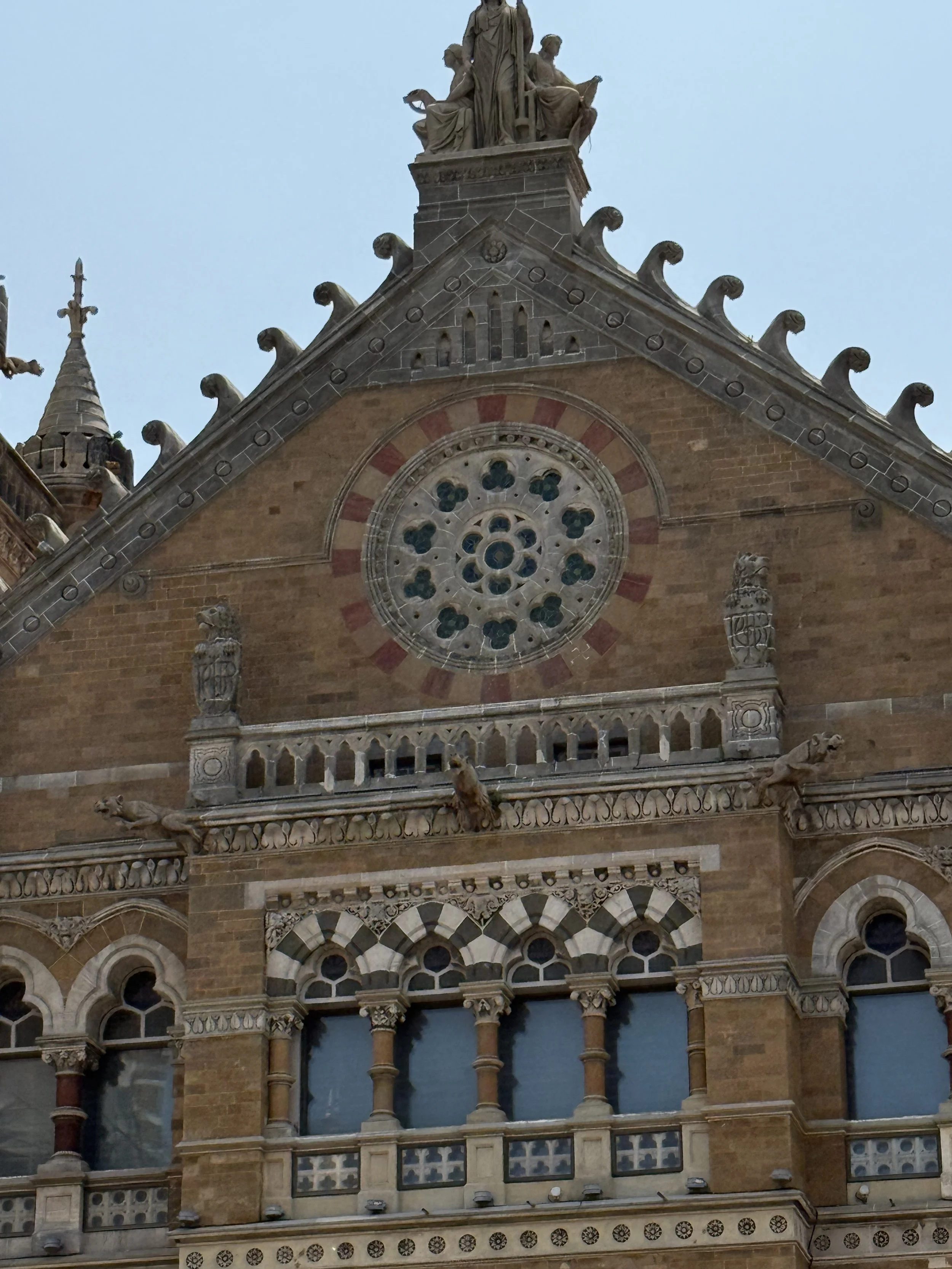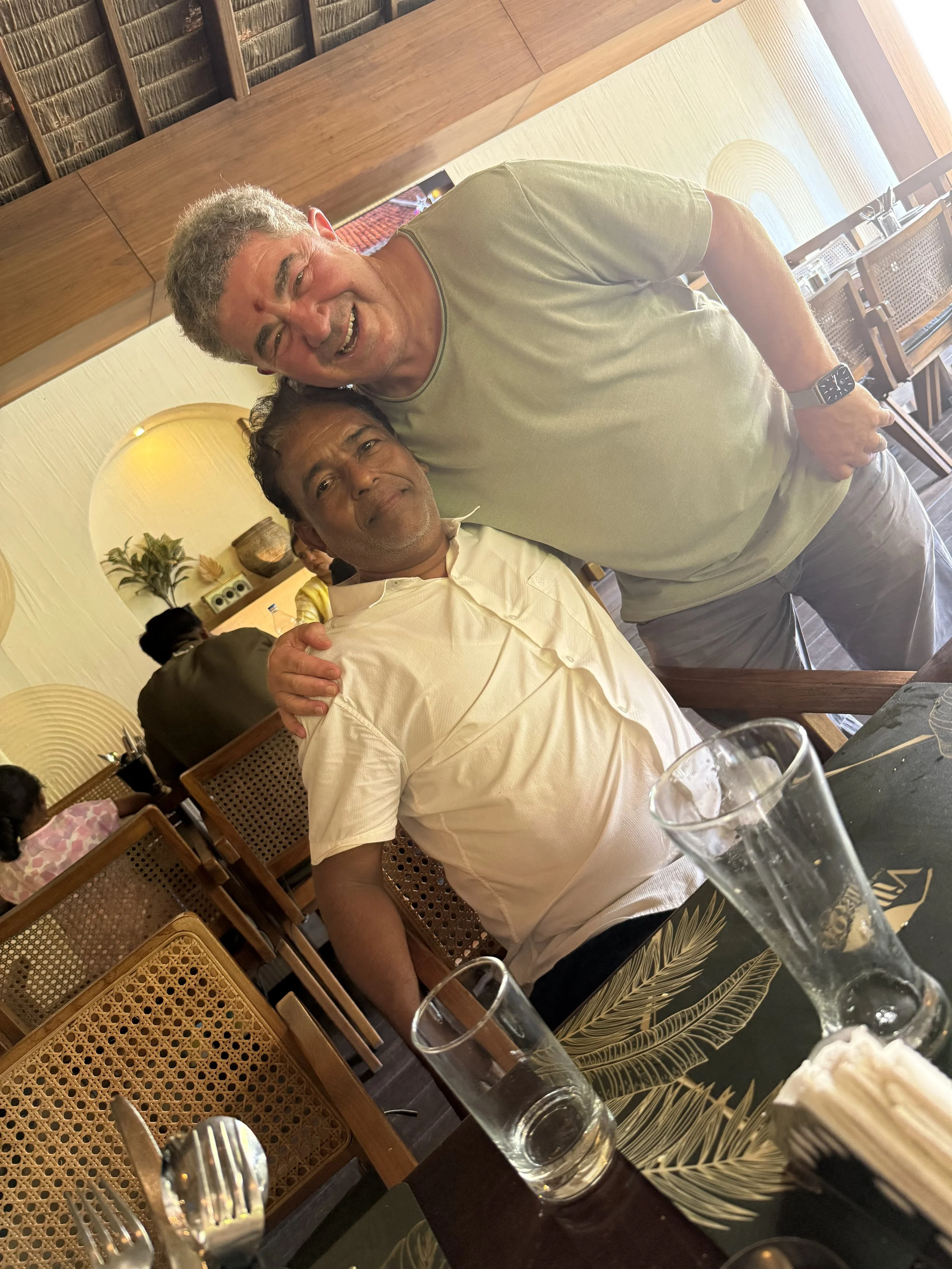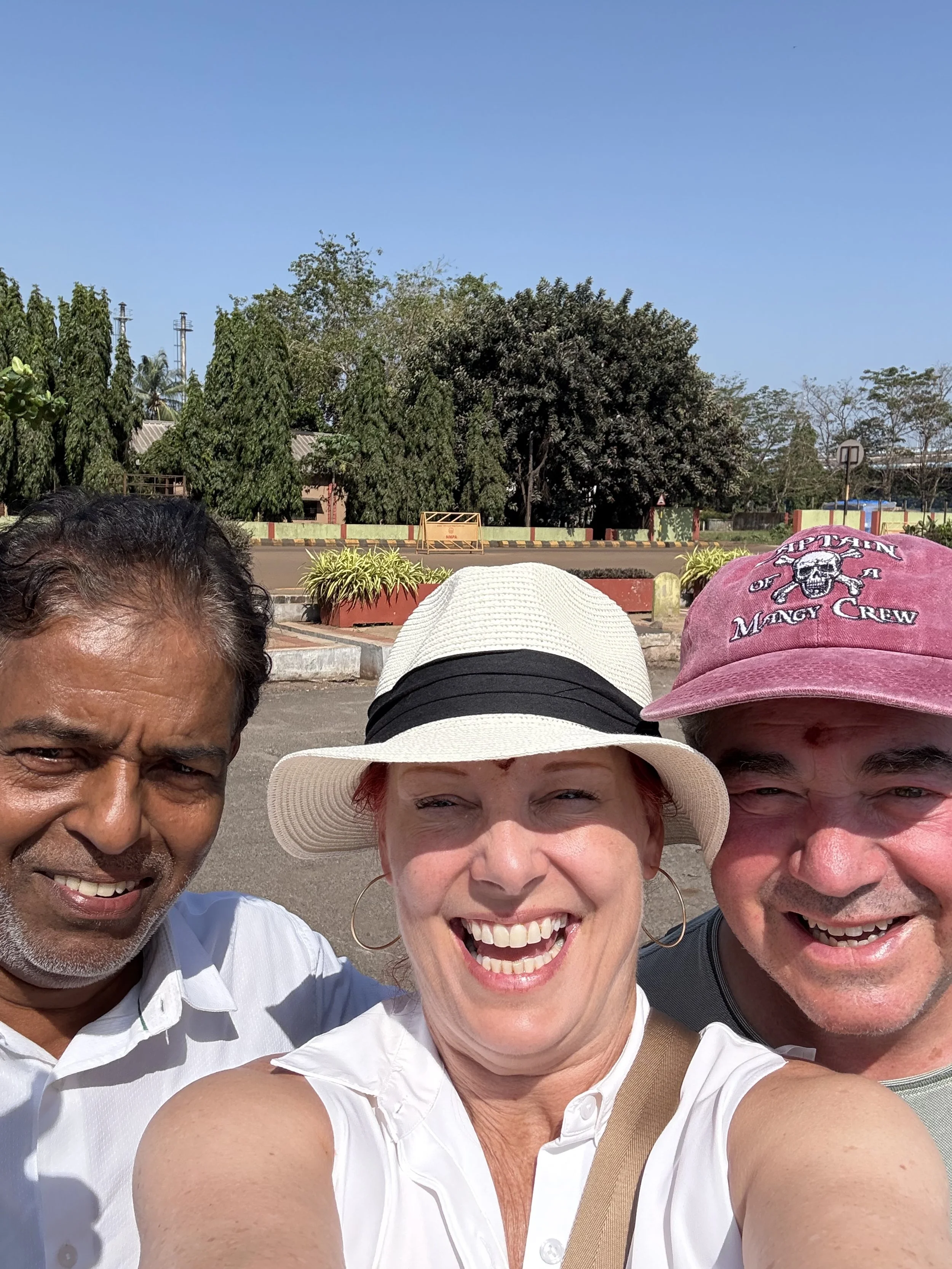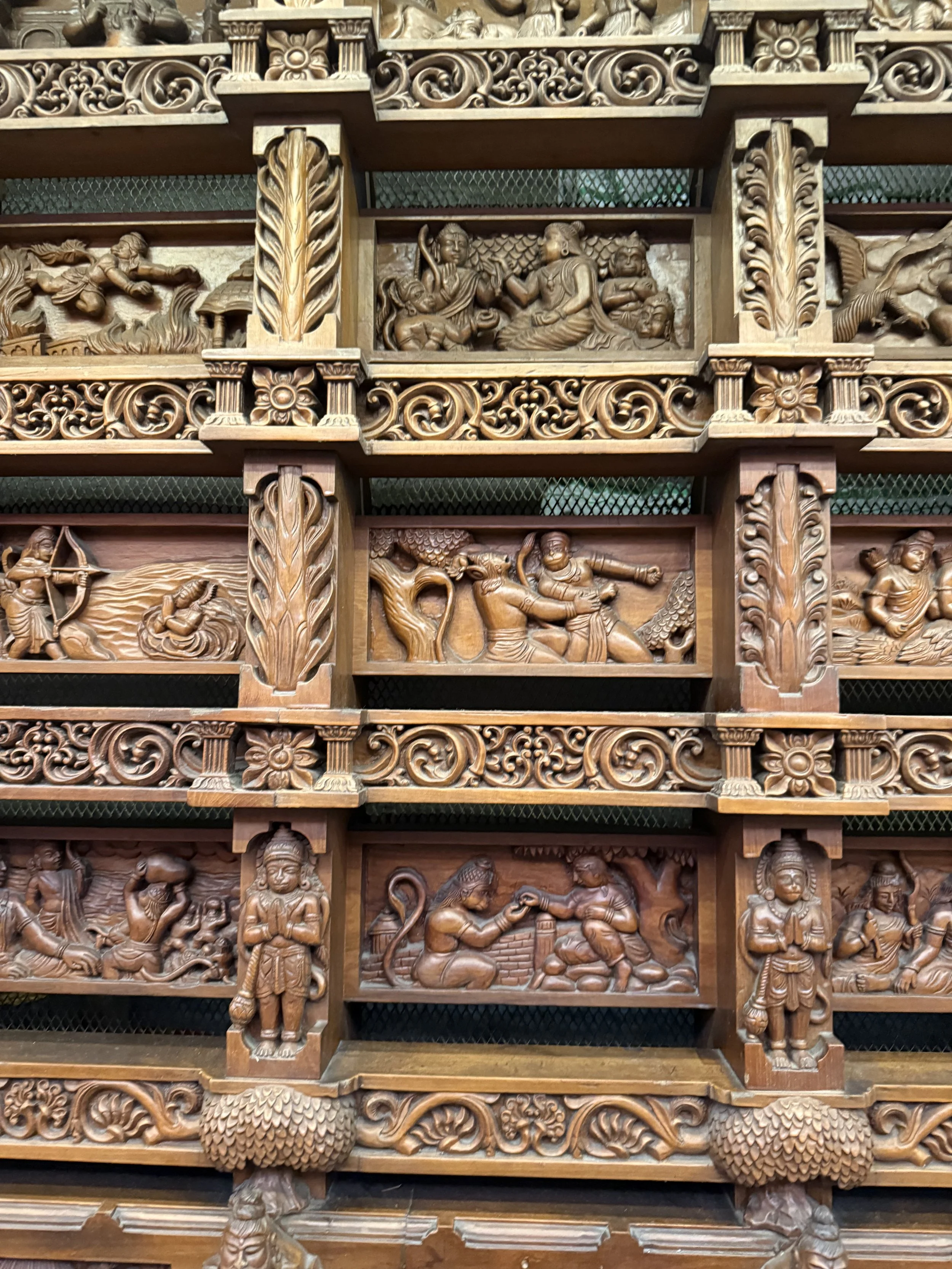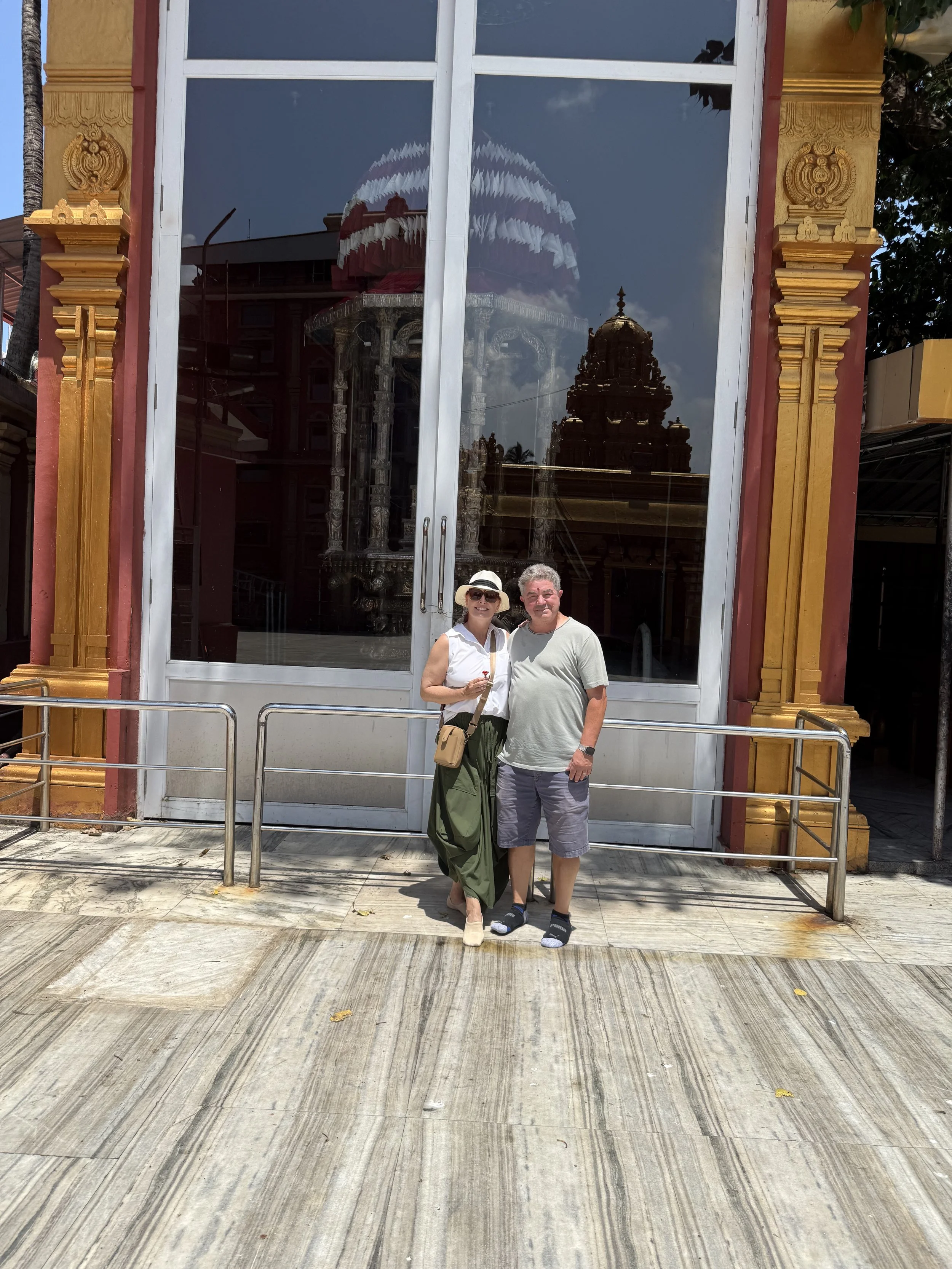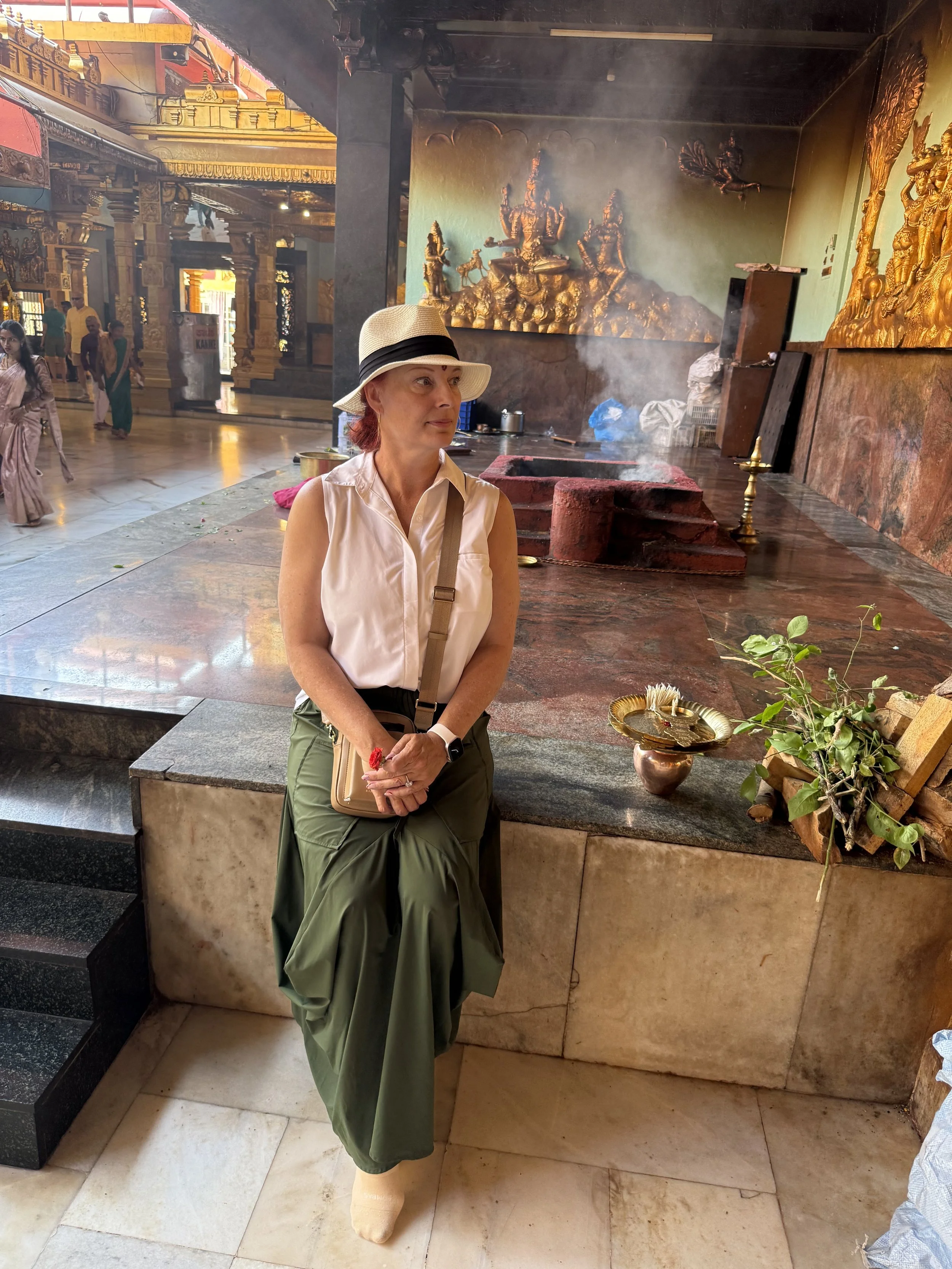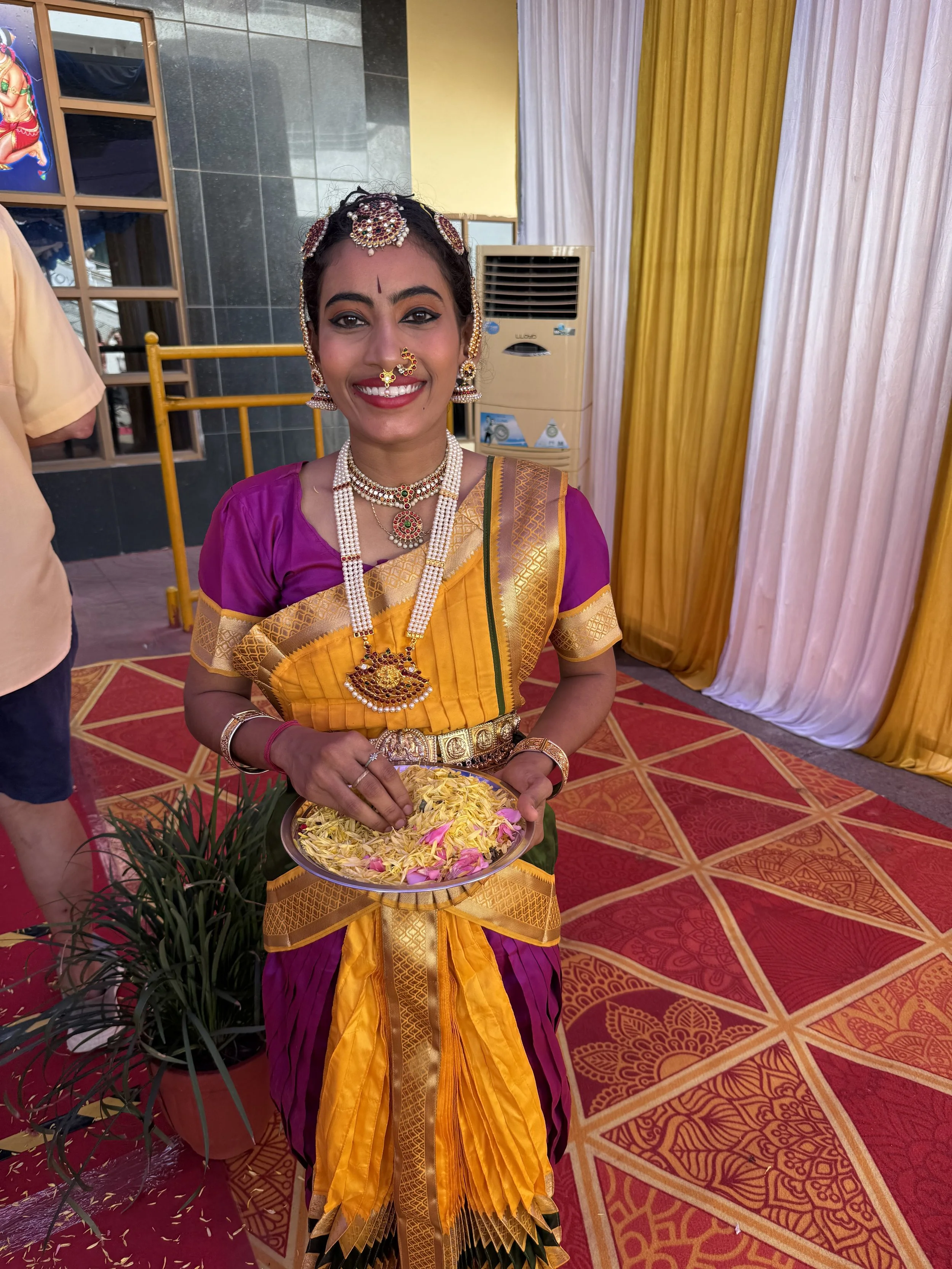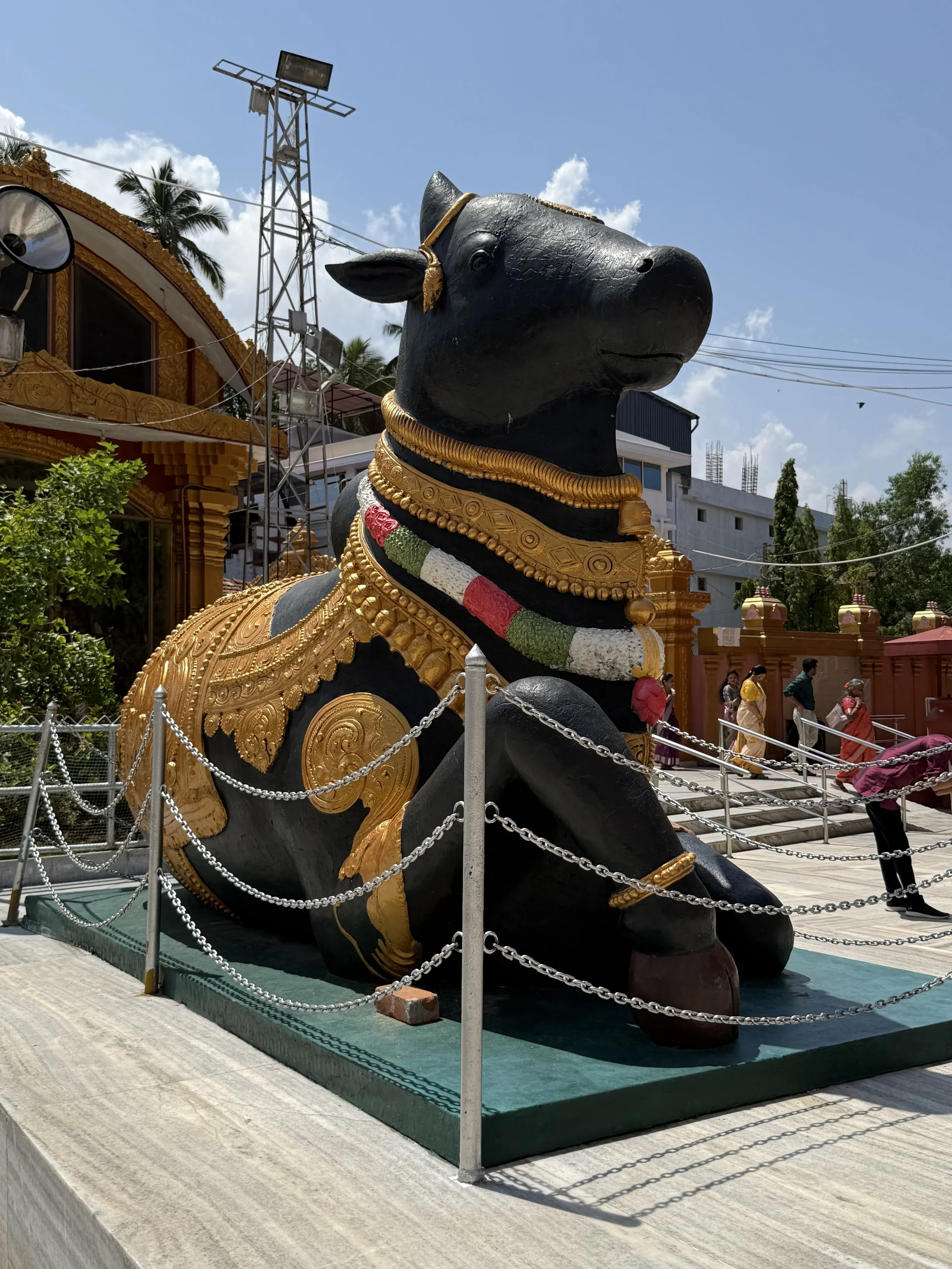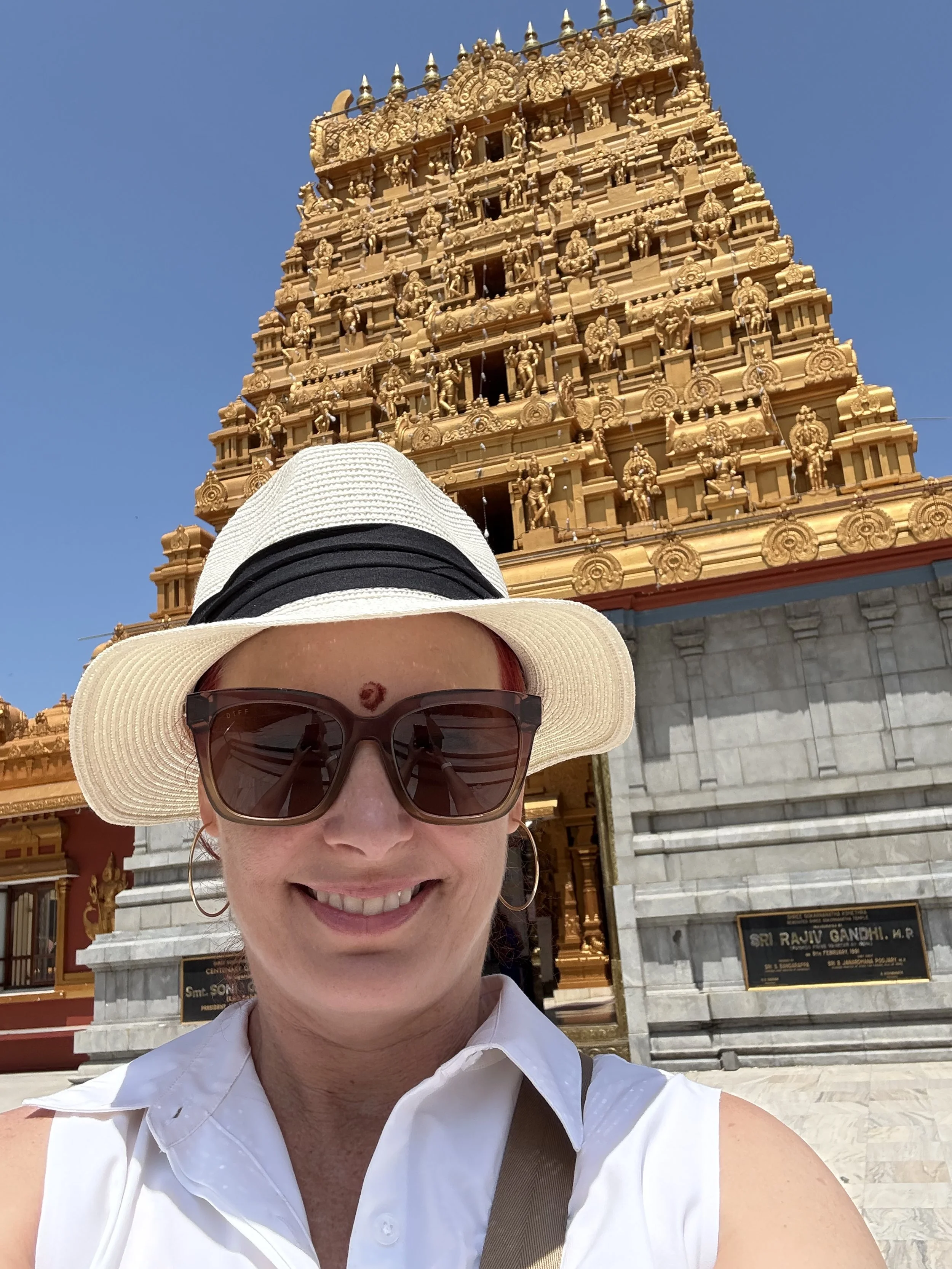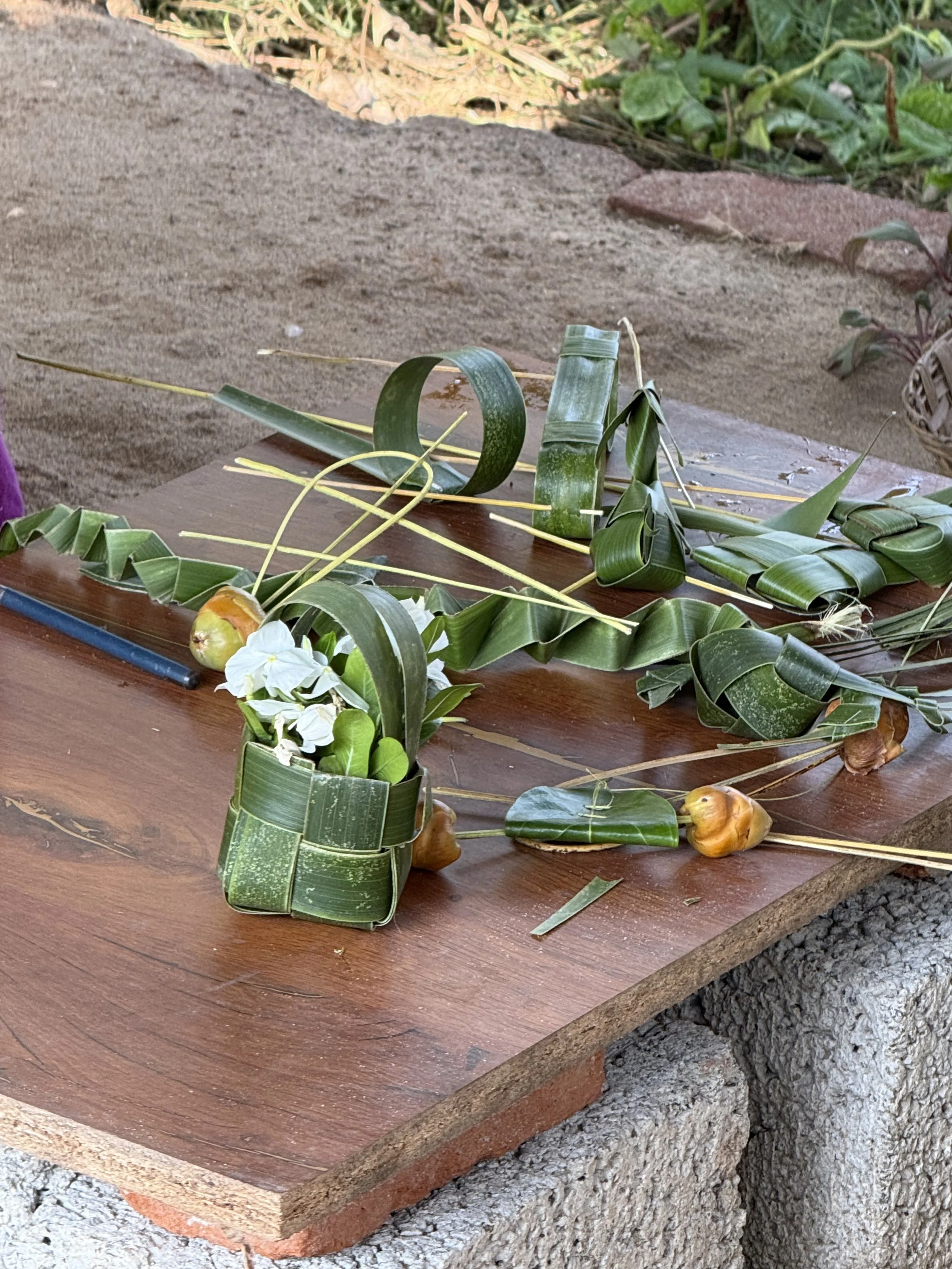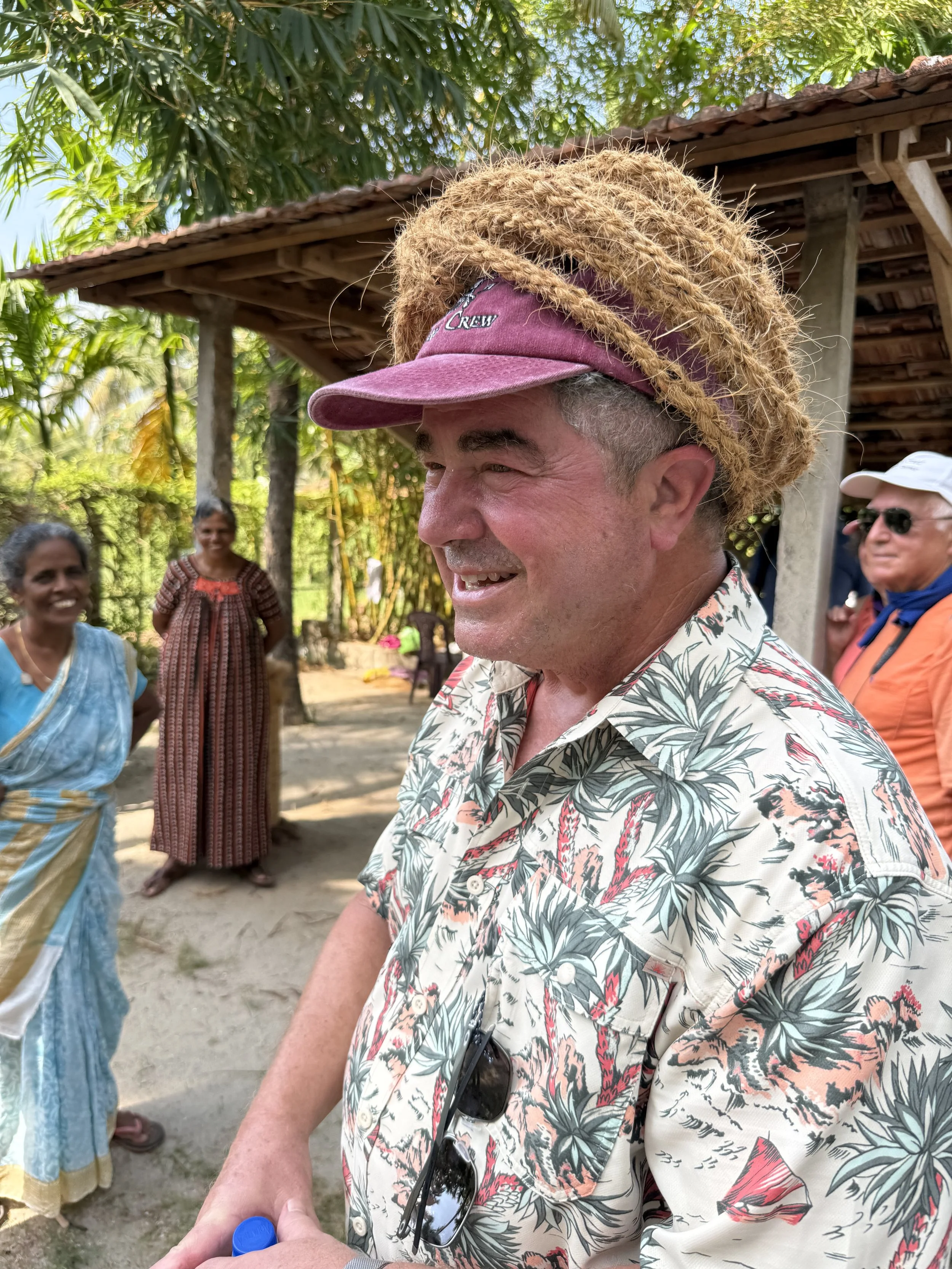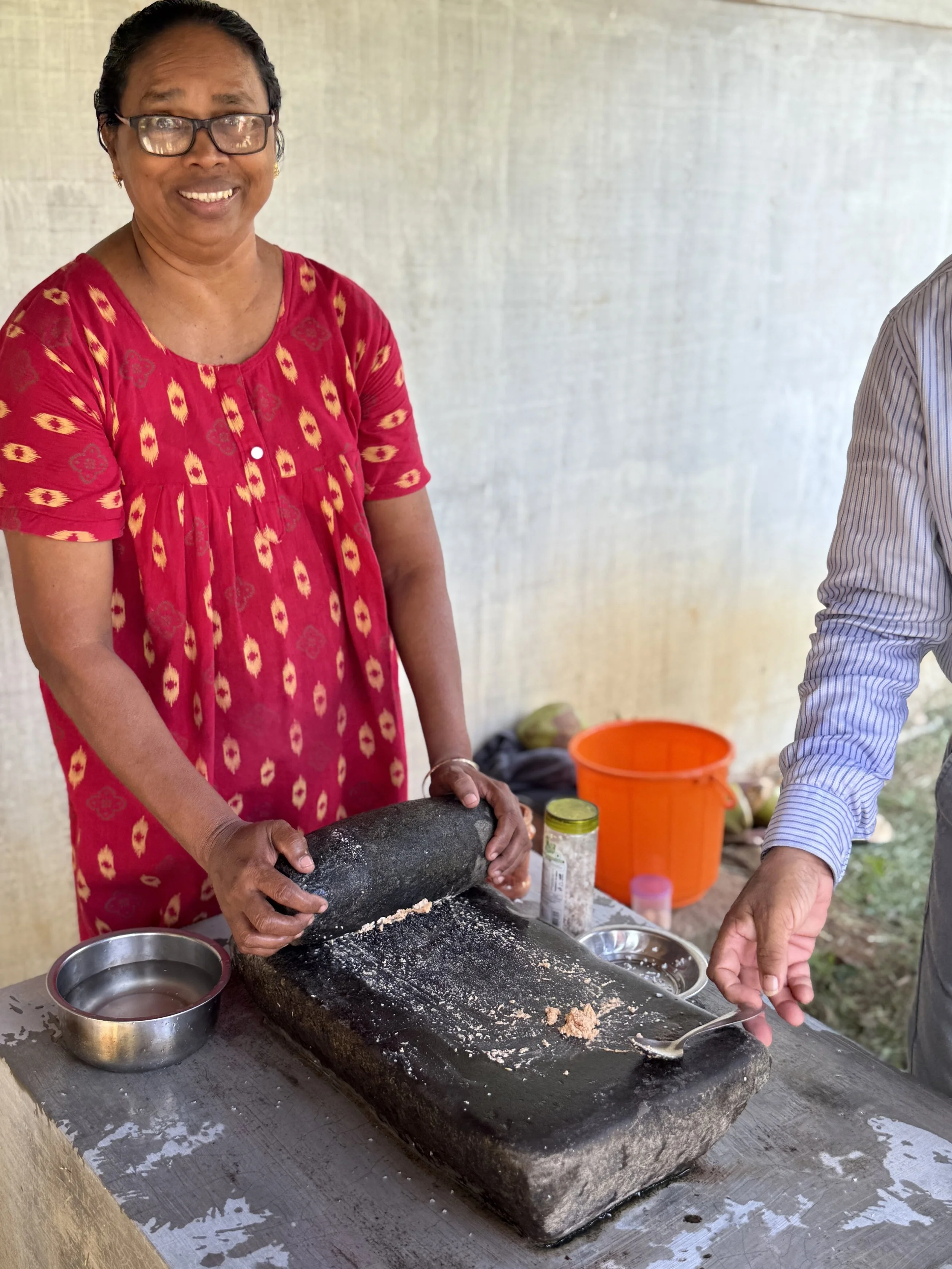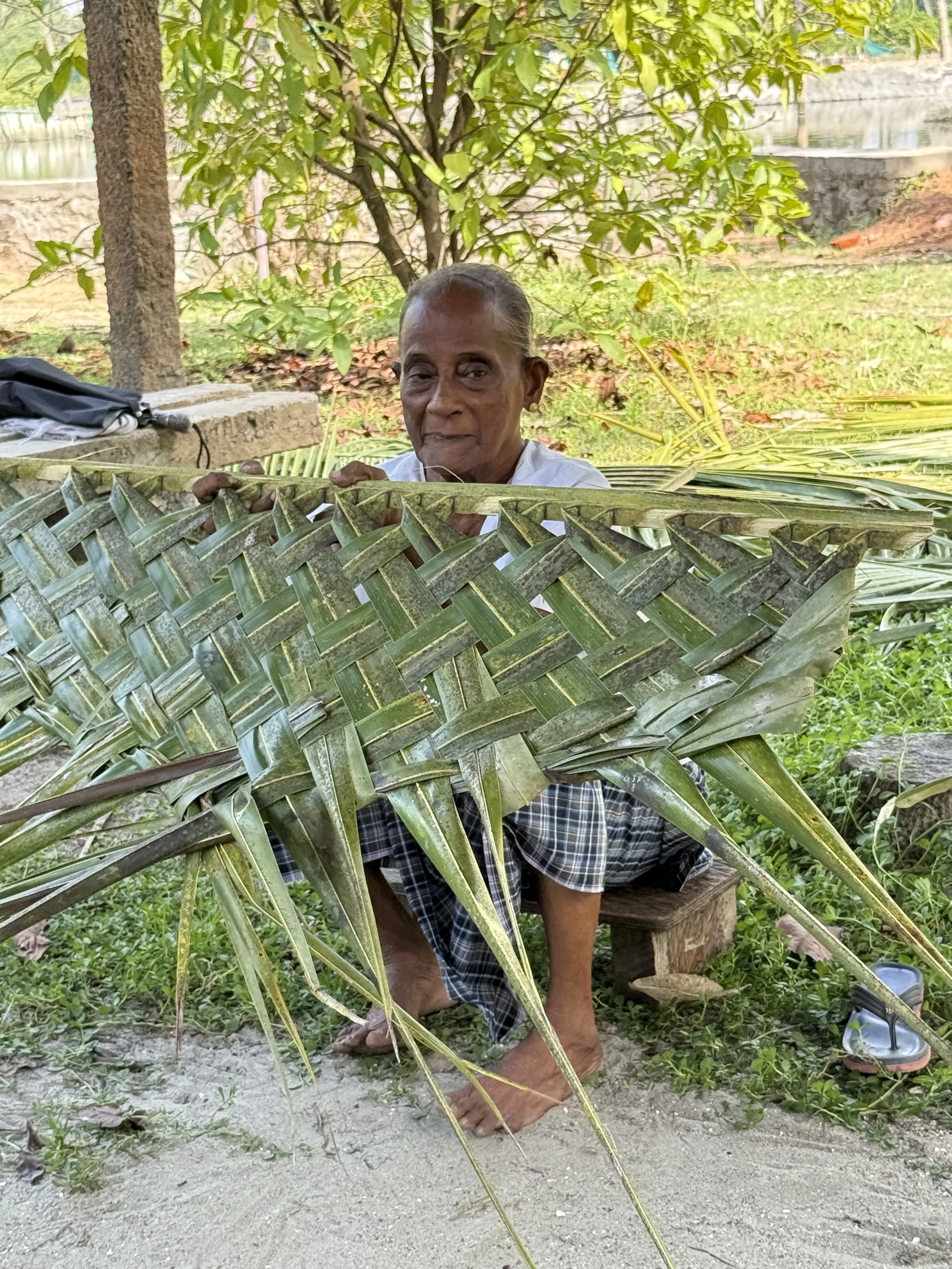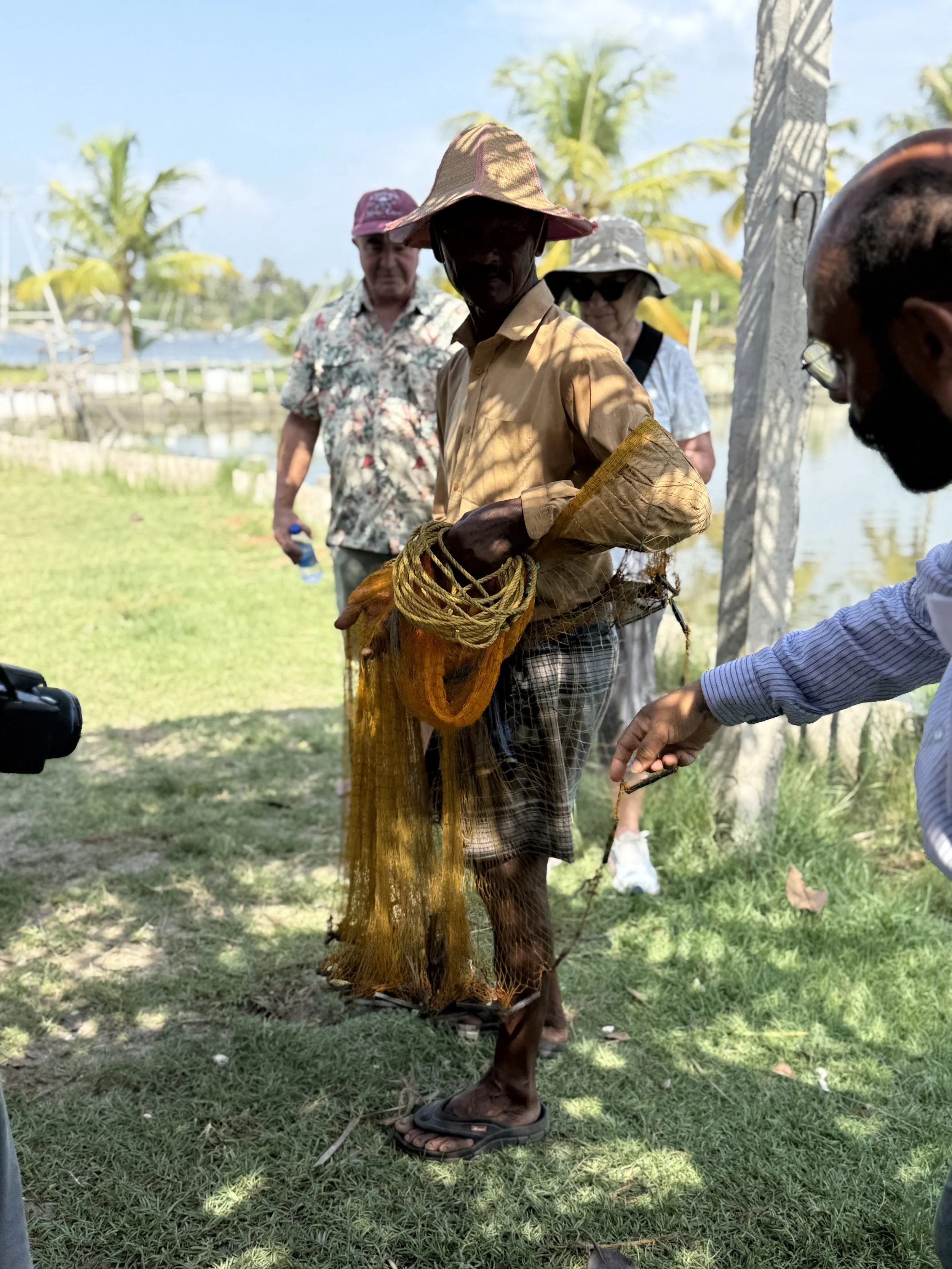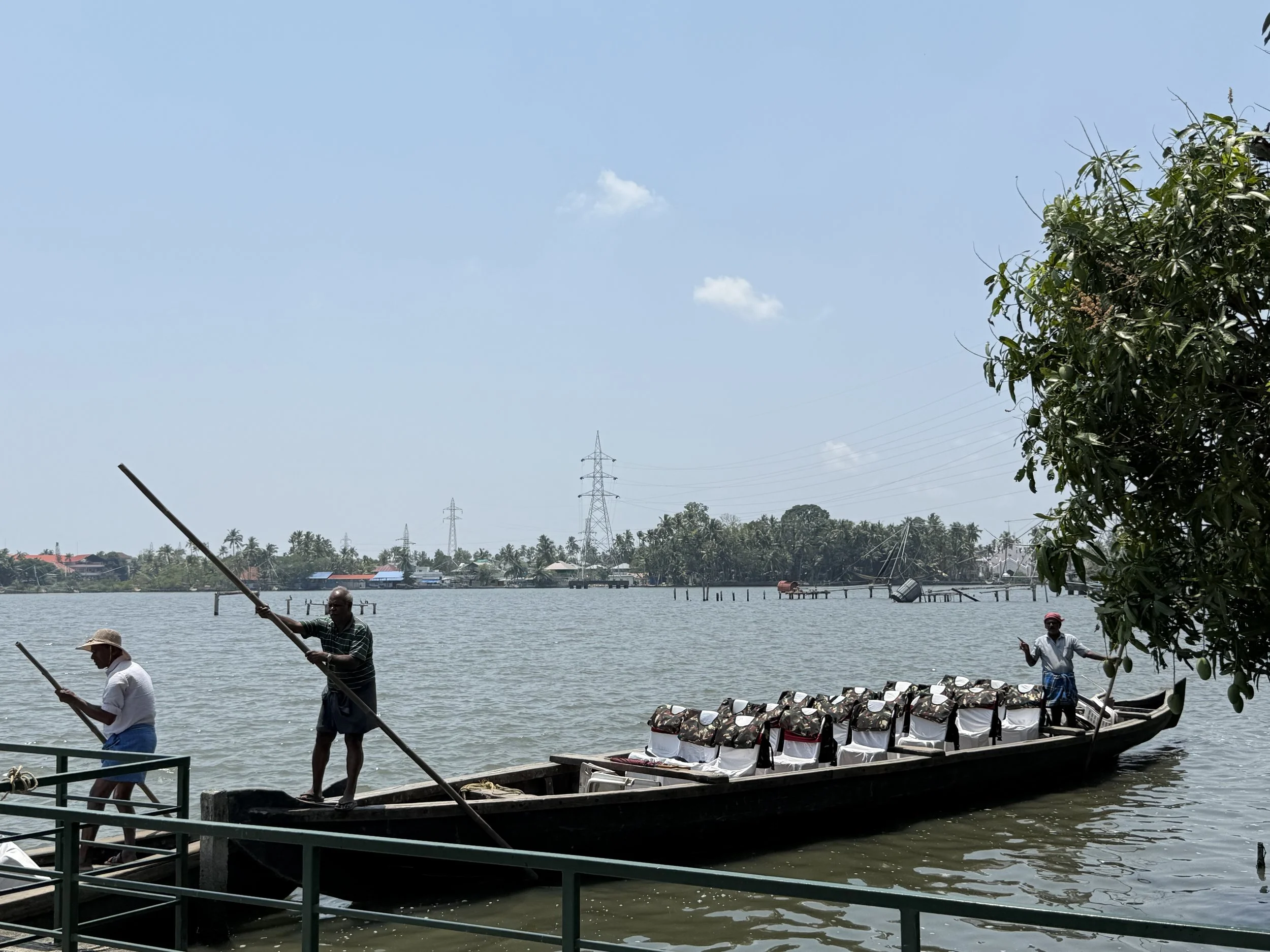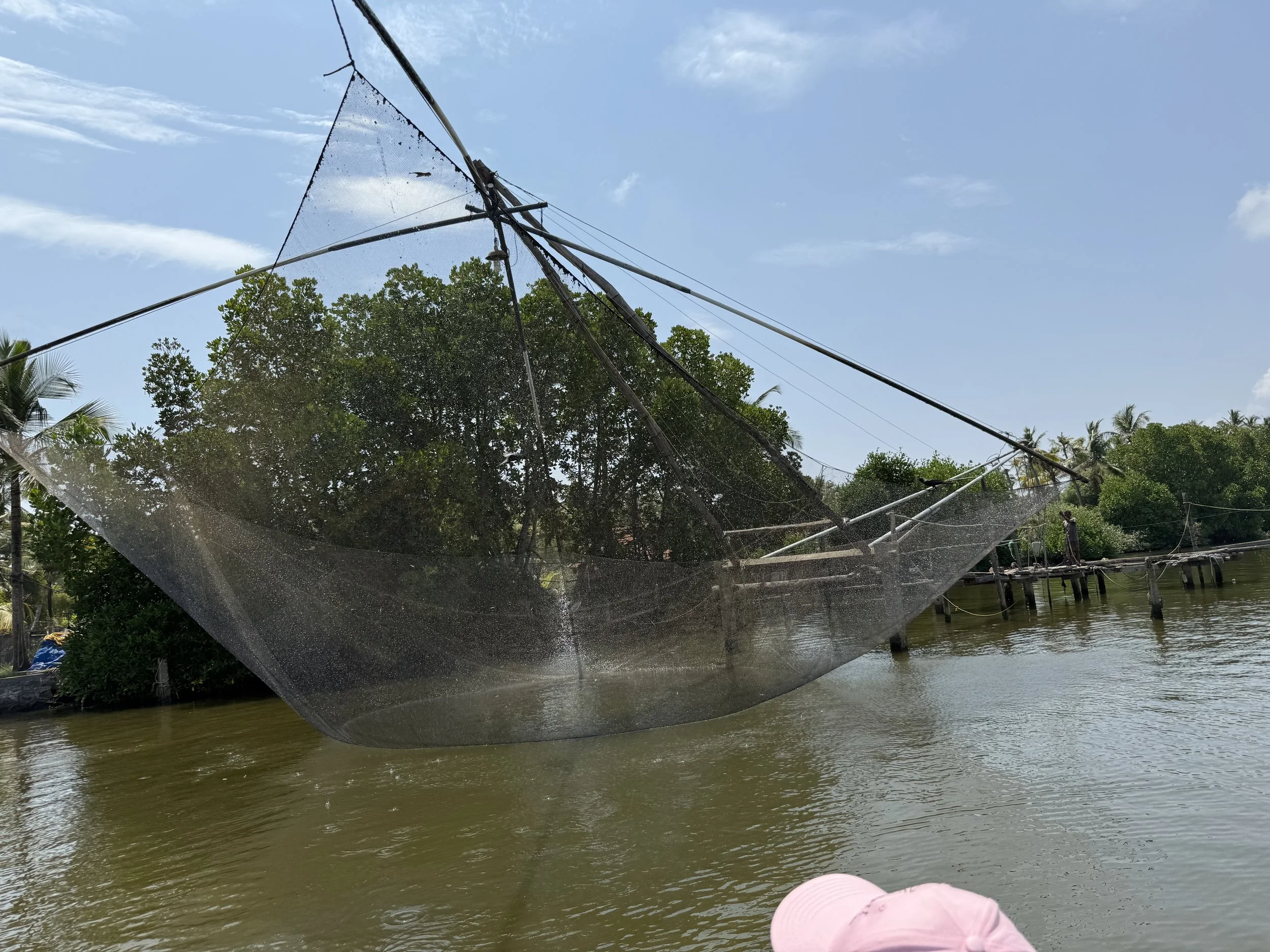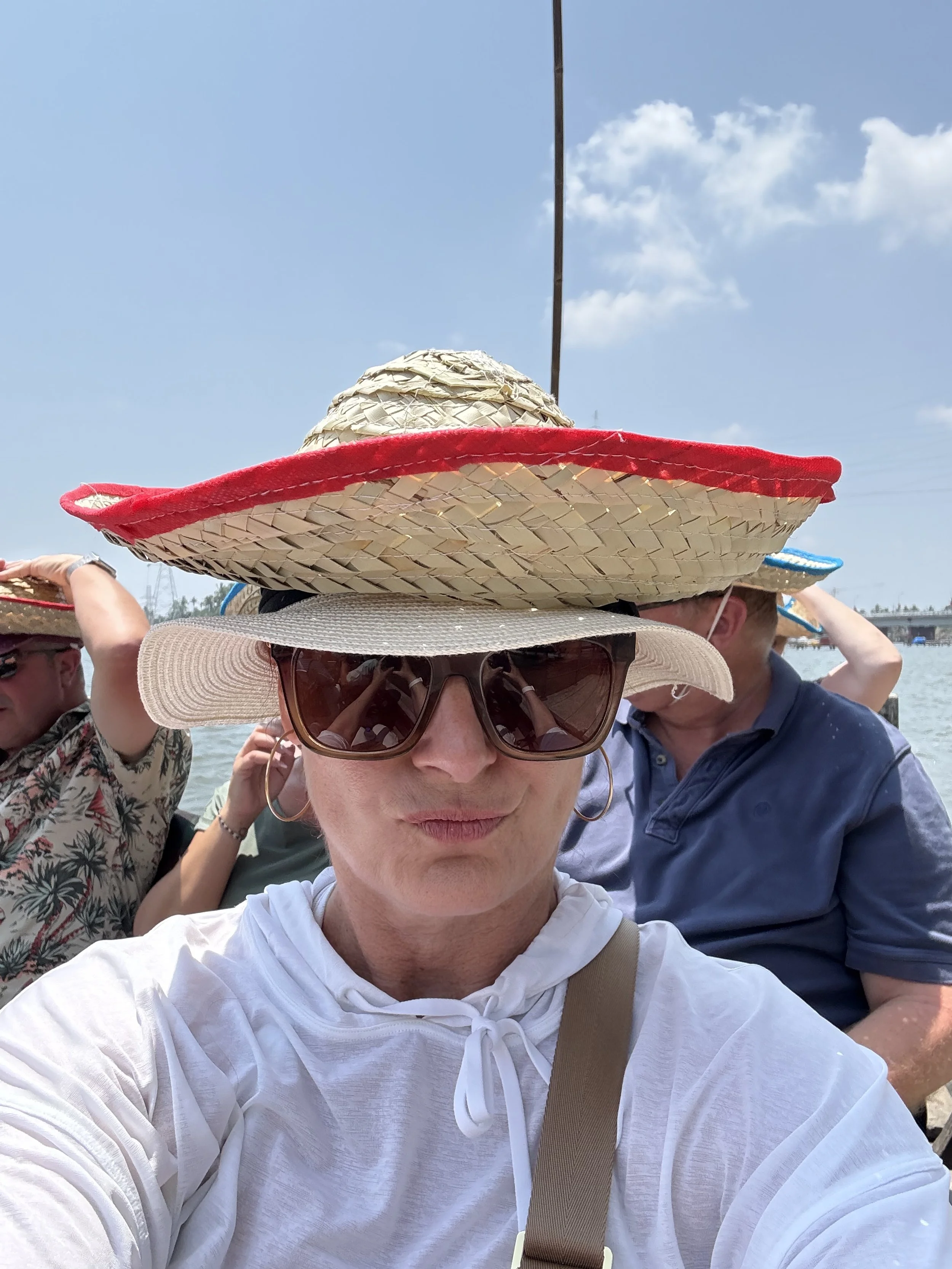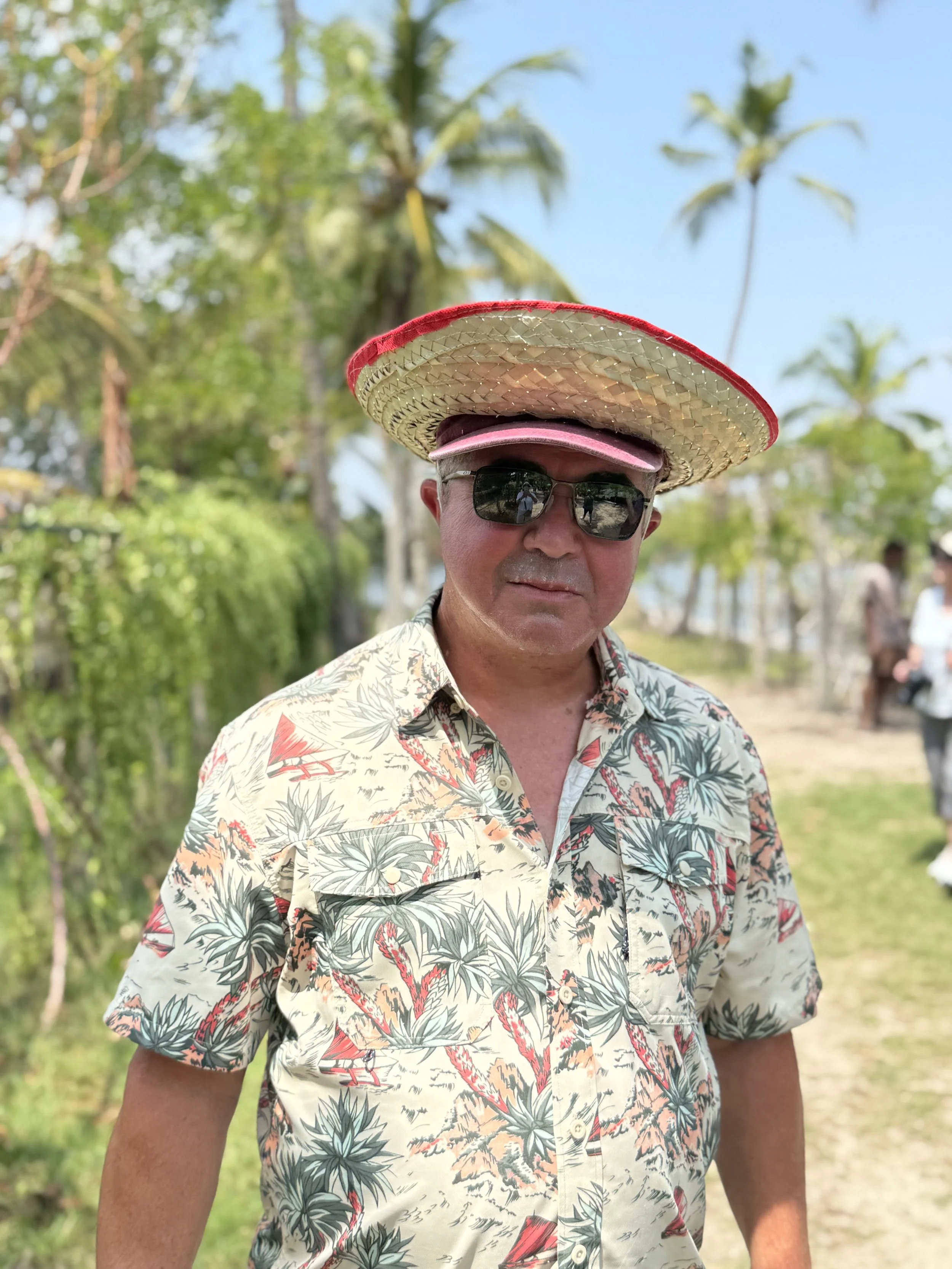Incredible India: Tuk Tuks, Temples, and Total Mayhem
India. Just saying it felt momentous. Neither of us had ever set foot in this vibrant, chaotic, endlessly fascinating country before, and we were equal parts excited and nervous. We’d heard about the colors, the food, the people, the traffic. But nothing prepares you for the full sensory experience that is India. Over the course of four whirlwind days, we got a taste of just a few corners of this vast and varied country—from the backwaters of Cochin to the mega-city madness of Mumbai.
Day 1: Cochin – Fishing Villages and Palm Fronds
Our first stop was Cochin (also known as Kochi), in the southern state of Kerala. This region is famous for its lush backwaters, spices, and long history of trade, thanks to its strategic location on the Arabian Sea. Cochin was once a key port for the Portuguese, Dutch, and British, all of whom left their mark.
We joined a tour to a traditional fishing village on Kumalangi Island, reached by an old wooden boat quietly poled across a shallow channel by a local fisherman. It was serene and slow—the calm before the tuk tuk storm to come.
Once across, we were welcomed by a community of villagers who demonstrated their ancestral skills: shelling mussels, weaving palm fronds into thatched roofs, setting and hauling in fishing nets, and crushing coconuts by hand to make chutney and twine. They even made hand-thrown pottery and adorable toys out of—you guessed it—palm fronds.
The villagers were funny, kind, and endlessly resourceful, showing us how they’ve lived off the land (and sea) for generations. The vibe was welcoming and heartfelt—and the heat? Unrelenting. This was the first of many “Did the sun just crawl inside my shirt?” moments on our Indian adventure.
We wrapped the day with our first tuk tuk ride—a raucous, hair-raising zip through the village. Think bumper cars meets roller coaster meets Mario Kart, only way hotter. Honestly? Way more thrilling than any Disneyland ride. While we didn't get to ride in a tuk tuk in Sri Lanka, we made up for it in India—and we're glad we did.
Day 2: Mangalore – Weddings and Wild Driving
Next up: Mangalore, in the neighboring state of Karnataka. Right off the ship, we were greeted like visiting royalty—musicians played, petals were tossed, and we walked through a beautifully decorated archway. We felt like honored guests at a festival.
We decided to freelance it that day, hiring a cab driver to be our personal guide. We quickly learned that driving in India is a full-contact sport. Lanes are more of a suggestion than a rule. At one point, we were four cars across on a two-lane road. To avoid an accident backup, our driver just veered off onto the shoulder, following scooters on an off-road detour. Mike covered his eyes. I laughed nervously. Our guardian angels were clearly working overtime.
Our first stop was a golden Hindu temple, the Shri Gokarnanatheshwara Temple, which shimmered with ornate detail and spiritual energy. We arrived mid-wedding celebration—a serendipitous treat. Weddings in India can last days, and we happened to catch the party between ceremonial stages. The family insisted multiple times that we come in and enjoy the event We finally gave in. Young girls greeted us with flower blessings, and we chatted with the bride’s brother—who lives in Singapore—about the event.
Inside, the temple was a mashup of ornate carvings and blinking lights, with plastic chairs arranged under ancient archways. It was like stepping into a living blend of past, present, and future—a running theme in India.
Our driver (photo-crazed and clearly unfazed by “no photography” signs) herded us around for quick snaps, then we headed to a church (pretty but forgettable) and then to the real star of the day: lunch.
We stopped at a breezy local village restaurant with a waterfall wall, and—did we mention?—it was HOT. But the food? Totally worth the sweat. With our driver’s help, we ordered crispy rice crackers with spicy tomato relish, buttery fish, pomfret, shrimp, garlic naan, and beer. The flavors were rich, intense, spicy, and deeply satisfying.
The butter fish, in particular, was a local specialty—tender, flaky, and bathed in a savory coconut-based curry that was both comforting and eye-wateringly spicy. It was the kind of dish that makes you sweat and smile at the same time.
Day 3: Goa – Saints, Spices, and a Rogue Tour
Goa, a former Portuguese colony, is known for its beaches, laid-back vibe, and Catholic churches. We signed up for a bus tour of highlights, which included a few churches and a bustling local market.
The most memorable site was the Basilica of Bom Jesus, home to the tomb of St. Francis Xavier, a major figure in Catholic missionary work in Asia. The blend of Catholic tradition and Indian culture was fascinating.
The local market was a sensory explosion—fish, flowers, vegetables, and more smells than we could identify. Big tour groups aren’t really our thing, so during some free time, we ditched the crowd and took a rogue stroll around the city. Mike led the charge, and we managed not to get hopelessly lost before rejoining the group. Barely.
Day 4: Mumbai – Philosophy, Laundry & a Whole Lot of History
Our final stop in India was the megacity of Mumbai—a bustling metropolis that blends British colonial architecture, Bollywood glitz, deep-rooted poverty, and astonishing resilience.
We booked a guide through the ship, and boy, did we luck out. Husainna, our guide, was a former college professor with a degree in Hindu philosophy. She was insightful, warm, and a total powerhouse.
At each stop, one of the first things we were told was the religious and ethnic composition of the city. In India, this is apparently very important, though I can’t say it would ever be mentioned in a place like the United States. Even though the dominant religion in India is Hindu, it certainly seems that the country tolerates—if not welcomes—other religions, including Muslims, Christians, various Japanese sects, and even to a very small degree Judaism.
We visited the Gateway of India, the majestic Taj Hotel, and the stunning Chhatrapati Shivaji Terminus (yes, that’s a train station, and yes, it’s glorious). But the highlight? A stop at the Dhobi Ghat, the world’s largest open-air laundry. Men were whacking clothes on concrete slabs, hanging them in neat rows, and working with a rhythm that seemed choreographed. You won’t see that on your next trip to Target.
Then we visited Mani Bhavan, the house-turned-museum where Mahatma Gandhi lived and worked during the Indian independence movement. Sitting in his library, learning about his life and influence, was deeply moving.
We ended with a visit to a local Jewish synagogue, which was small but nicely kept up. Mike was greeted with a blessing as we walked in—another moment of India’s layered spiritual heritage on full display. As often seems to be the case traveling abroad, it paled in comparison to the other religious monuments, but that’s likely a reflection of the very small percentage of Jews in the community.
Reflections on India
India is impossible to summarize. It’s chaotic, welcoming, overwhelming, beautiful, and baffling all at once. Every moment is packed with contrasts—modern tech alongside ancient rituals, temples next to high-rises, history bumping up against the present.
One of the more sobering contrasts we observed was the stark wealth disparity. Grand hotels and luxury malls sit just blocks from informal settlements, and the line between wealth and poverty can shift dramatically from one street to the next. Mike remarked that equally telling was a 20+ story apartment building we drove past that is owned and occupied by a single family. The first eight floors are just for parking. The remaining 20 floors house only eight family members and their continuous staff of 500—rotated three times a day. This is the same family that reportedly spent $200 million to throw a wedding in London for one of their sons.
Overall, India was a fascinating country, one to which we would like to return. We just scratched the surface, but this complex mixture of 1.3 billion people seems to be a crazy quilt of cultures, languages, foods, and traditions. One of our guides told us that over 1,000 local languages are spoken only in very small geographic areas, and that the country routinely uses three official languages across its vast expanse. So much to see, so much more to understand. We look forward to returning someday and trying to get a better grasp on this surprisingly interesting and amazing country.
Yes, it was HOT, and yes, the traffic might give you gray hairs. But we were met with kindness, curiosity, and careeverywhere we went.
As our guide Husainna told us, India has a deeply ingrained welcoming and accepting philosophy—an openness that has helped it absorb and adapt across centuries of change.
And we? We were just grateful to be along for the ride.
Namaste, India. You amazed us.
SIDEBAR: India by the Numbers
28 states and 8 union territories
22 officially recognized languages
Over 1,000 dialects spoken across the country
Hindi and English are widely used at the national level
India is one of the most linguistically diverse countries in the world. In many regions, people speak multiple languages daily, depending on their family, education, and the region they live in. This multilingualism reflects the country’s incredible cultural richness—and adds a fascinating layer to every conversation



